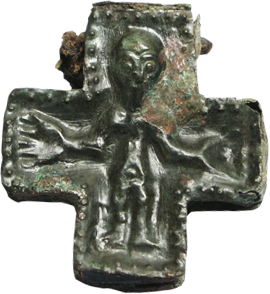Archeologický ústav AV ČR, Praha si Vás dovoluje pozvat na přednášku profesora Ernsta Pernicky (Curt-Engelhorn-Zentrum Archäometrie, Mannheim, Germany a Institute of Earth Sciences, Heidelberg University): „ISOTOPE ARCHAEOMETALLURGY“. Přednáška se uskuteční v úterý 6. června 2017 od 15:00 v knihovně Archeologického Ústavu v Praze.
Anotace:
It has long been recognized that it should be possible to use some form of geochemical finger printing to trace archaeological metal objects to their geological source or, at least, to their production site. The basic ideas were already formulated in the nineteenth century and first applications on archaeological metal finds were attempted. Since the advent of instrumental methods for chemical analysis large programs of analysis of prehistoric metal objects have been undertaken. However, the relationship between a metalliferous ore and that of a metal object is much more complicated than originally assumed. Although the chemical composition can be used to some extent for provenance studies, the application of lead isotope abundance ratios in this field has provided a major breakthrough in the 1970s. The application of isotope geochemistry is neither confined to metal objects nor to lead isotope abundance ratios. In some applications covering copper, silver, lead and tin from various periods the possibilities and limitations of lead isotope ratios in metals will be discussed.
New isotope systems have been introduced in the last two decades including isotope ratios of copper, tin and osmium. The possibility of using zinc isotope ratios has at least been discussed. While the copper isotope system may provide limited information concerning the provenance of copper, the isotope ratios of tin have already proven to be invaluable to tackle the old question of tin provenance in the Bronze Age. Furthermore, osmium isotope ratios may eventually be useful for provenance studies of gold but the major application may actually occur in iron objects, which have eluded attempts to relate them to specific ore sources so far. Another application may be the detection of large-scales melting in general by deposition of osmium in peats and other environmental sinks.
Last but not least, radioactive isotope systems have been developed for dating of metals. 210Pb can be used to determine if any base metal or silver was produced within the last hundred years and thus provides a very significant test of authenticity. The radioactive decay of uranium and thorium produces helium that can be stored in gold metal. It is released on heating above 800°C so that this U/Th-he method in principle allows the absolute dating of gold objects. Applications of both methods will be presented.
Pozvánka: PDF







